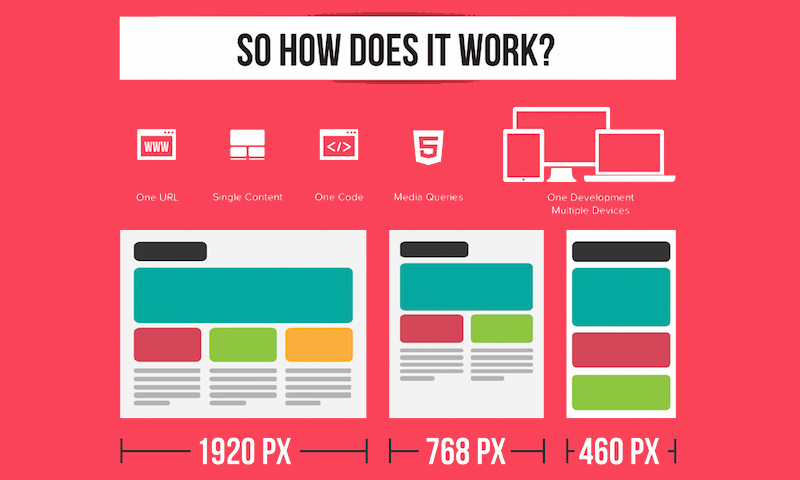The Advancement Of Web Site Layout: From Past To Existing
The Advancement Of Web Site Layout: From Past To Existing
Blog Article
Article Created By-Hartley Hejlesen
In the past, web sites were easy and focused on information. Navigation was direct, and design was for desktops. Now, individual experience is vital. Data overviews layouts for easy navigating. Responsive formats suit various gadgets. Today, dark setting reduces strain, and minimal menus boost navigation. Interactive features involve customers, and vibrant visuals stick out. AI combination boosts involvement. See just how design has advanced to boost your on the internet journey.
Very Early Days of Web Design
In the early days of website design, simplicity reigned supreme. Sites were fundamental, with minimal shades, font styles, and layouts. The focus was on giving details as opposed to showy visuals. Customers accessed the net through sluggish dial-up connections, so rate and performance were essential.
Navigating menus were straightforward, usually located on top or side of the web page. Internet sites were made for home computer, as mobile surfing wasn't yet common. https://www.forbes.com/sites/forbesagencycouncil/2022/02/07/want-to-market-on-tiktok-12-top-tips-for-businesses/ was king, and designers prioritized simple readability over complex design elements.
HTML was the key coding language utilized, and designers needed to work within its constraints. Animations and interactive functions were marginal contrasted to today's requirements. Websites were static, with little vibrant content or personalized individual experiences.
Surge of User-Focused Design
With the development of site style, a shift in the direction of user-focused layout concepts has come to be progressively famous. Today, developing web sites that focus on customer experience is vital for engaging site visitors and accomplishing service goals. User-focused style involves comprehending the demands, preferences, and habits of your target audience to customize the web site's design, web content, and includes as necessary.
Designers currently conduct extensive research, such as user surveys and use screening, to collect understandings and feedback directly from users. This data-driven method aids in creating intuitive navigating, clear calls-to-action, and visually attractive user interfaces that reverberate with site visitors. By putting the customer at the facility of the layout procedure, sites can provide a much more tailored and delightful experience.
Responsive layout has additionally become a key aspect of user-focused style, making sure that sites are enhanced for different gadgets and display dimensions. This versatility boosts ease of access and usability, accommodating the varied ways customers communicate with websites today. Essentially, the increase of user-focused style signifies a shift in the direction of creating digital experiences that prioritize the needs and assumptions of the end individual.
Modern Trends in Website Design
Check out the most recent trends forming website design today. One prominent pattern is dark mode layout, offering a sleek and modern look while reducing eye strain in low-light atmospheres. Another vital pattern is minimalist navigation, streamlining menus and improving individual experience by concentrating on essential elements. Incorporating micro-interactions, such as computer animated buttons or scrolling impacts, can develop a more engaging and interactive web site. Responsive layout stays important, ensuring smooth individual experiences throughout numerous gadgets. In addition, making use of bold typography and unbalanced formats can include visual interest and accentuate particular content.
Incorporating AI technology, like chatbots for customer assistance or tailored referrals, enhances customer involvement and simplifies procedures. Accessibility has also become a substantial pattern, with designers focusing on comprehensive layout methods to satisfy varied user demands. Embracing sustainability by optimizing web site efficiency for speed and performance is another emerging pattern in web design. Working together with individual responses and information analytics to iterate and improve layout constantly is important for staying relevant in the ever-evolving electronic landscape. By accepting these modern patterns, you can develop an aesthetically enticing, user-friendly internet site that reverberates with your audience.
Final thought
As you assess the development of site style from the very early days to currently, you can see exactly how user-focused style has actually ended up being the driving pressure behind modern fads.
Accept the trip of adjustment and adaptation in web design, always keeping the user experience at the center.
Remain existing with the most up to date patterns and modern technologies, and never ever quit progressing your approach to produce visually spectacular and user-friendly web sites.
Advance, adapt, and develop - the future of web design is in your hands.
